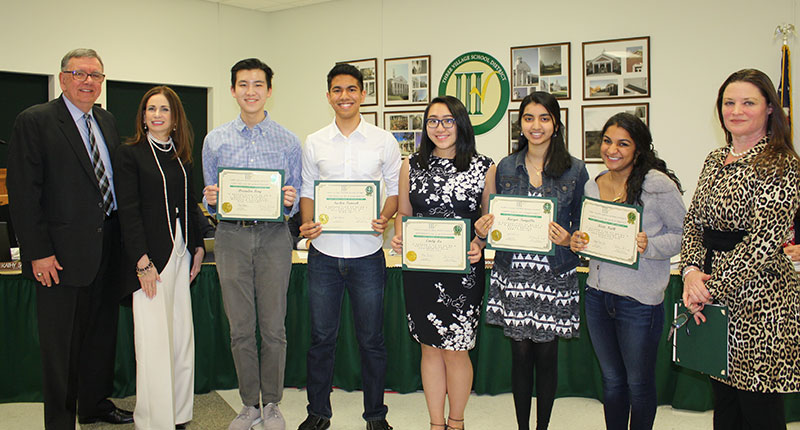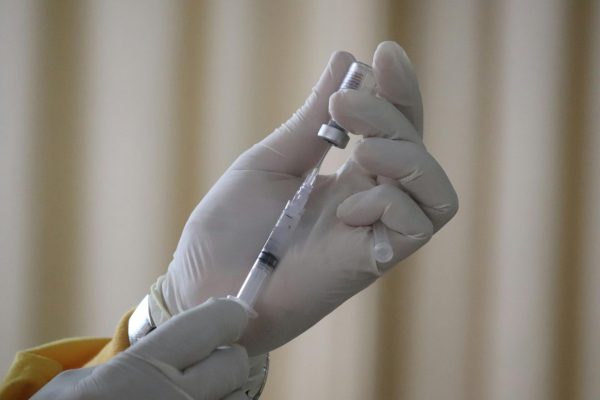Student-Researchers Place Top 3 at LISEF
April 8, 2017
Last month, several Ward Melville students competed at the Charles Duggan Long Island Science and Engineering Fair, also known as LISEF. LISEF is a two-day competition for advanced high school research projects and seeks to promote excellence in scientific inquiry in Long Island schools.
Participants are given a special opportunity to present to professionals in their subject areas. Ultimately, up to 20 LISEF projects are sponsored to compete at the International Science and Engineering Fair (ISEF) in May, which brings over 1500 students from 70 nations together to compete for scholarships, tuition grants, internships, scientific field trips, and the grand prize: a $75,000 college scholarship.
At this year’s LISEF, two Ward Melville students won second, two more earned third, and several others received Honorable Mentions.
Sachin Patnaik won second in Cellular and Molecular Biology, with his project A Novel Co-culture System for Efficient Differentiation of Hemangioblasts to CD31+ Endothelial Progenitors. Sachin’s project created a new method of stem cell differentiation using placenta-derived cells, which he hopes will replace a current method using animal cells for the same purpose.
Nestor Tkachenko also won 2nd place in his category, Physics and Astronomy. His innovative project, Can Cars Fly? Eddy Current Magnetic Levitation as Viable Technology, certainly impressed the judges. His research focused on how to make cars fly, using eddy current magnetic levitation.
Albert Liu’s research project, Anomaly Detection in Time Series of Dependent Stochastic Block Model Graphs, placed third in the Mathematics category. Albert’s project utilized statistics and coding to detect irregular activities in networks.
Kirti Nath’s project, “Assessing the developmental and metabolic toxicity of neuroactive pharmaceuticals using early life stage zebrafish (Danio rerio),” placed third in Animal Science. Kirti’s project analyzed how fish are affected by discarded human medications that enter aquatic environments as sewage pollutants.
Additionally, Brandon Feng and Daniel Lee won Honorable Mention in Energy: Chemical and Physical for their project A Robust Sensor Network-based Estimation Model for Wind Fields, which involved maximizing the collection efficiency of solar panels using a simulator that would vary wind fields.
The students agreed that the research fair was a rewarding experience, particularly because it allowed the researchers to practice presenting and discussing their project. As Sachin explained, “Presenting [his project] was especially great because it gave me the opportunity to discuss my research with professional scientists and receive their input and feedback on my work. Placing was an added bonus.” Kirti shared similar opinions, adding, “LISEF was a good experience in terms of practicing presenting. So much of research this year has been writing. LISEF was a good change of pace. LISEF is also different because it requires you to answer different questions on the spot. Those questions can get tough, especially during round two.”
For future participants of the fair, the student-researchers offered insightful advice. To underclassmen planning to compete at LISEF, Kirti recommends, “Just try to enjoy it, and try to anticipate what the weaknesses in your project are, and what you may get asked about to. If you are on the fence about competing I would definitely recommend doing it, it’s valuable practice in public speaking.” Sachin had similar advice. He noted that while “it’s a lot of work, in the end, it’s all worth it.” To future competitors, he advised, “Don’t over-rehearse or memorize what you plan to say. Also, don’t go into the competition looking for an award.”












